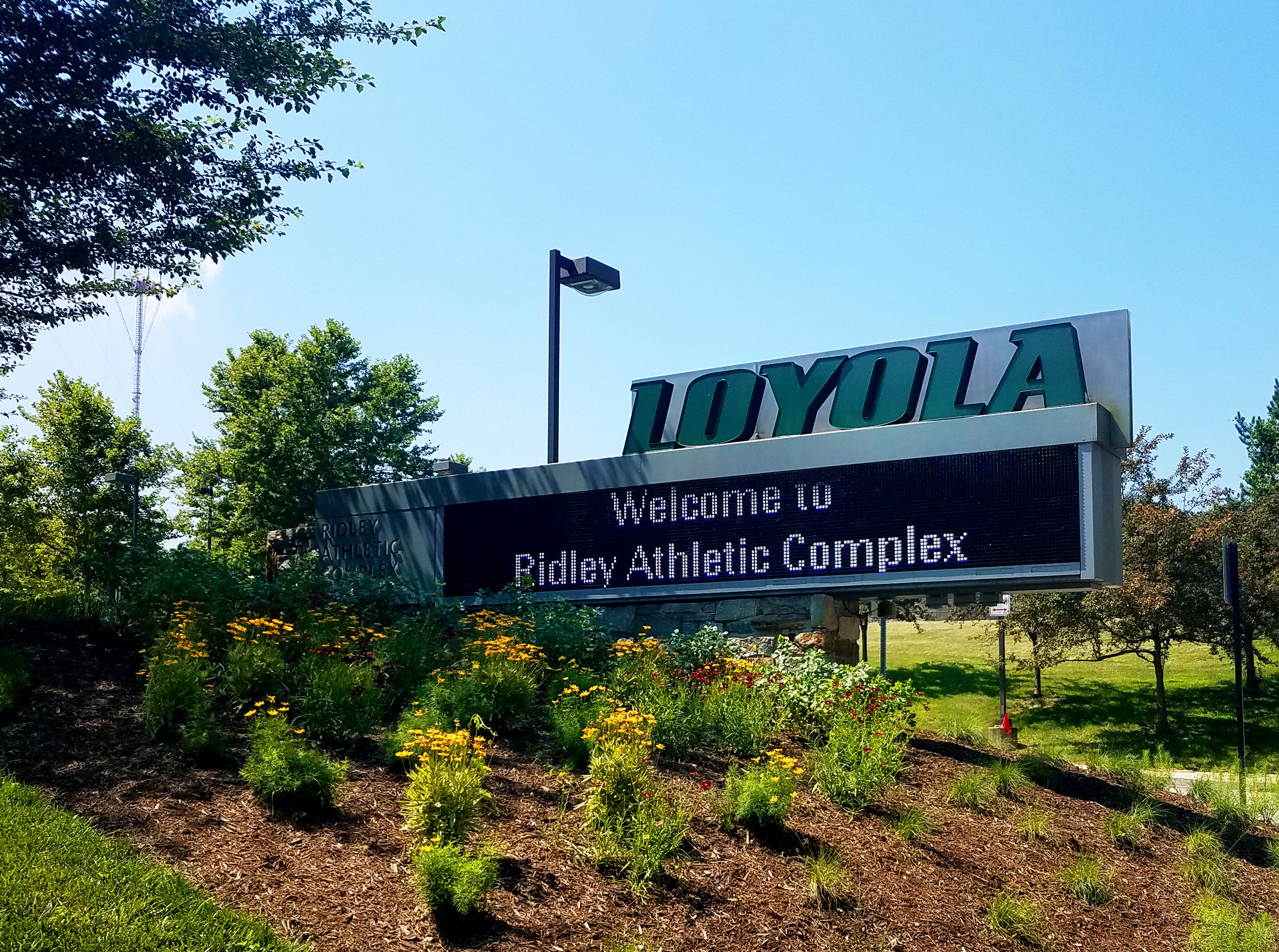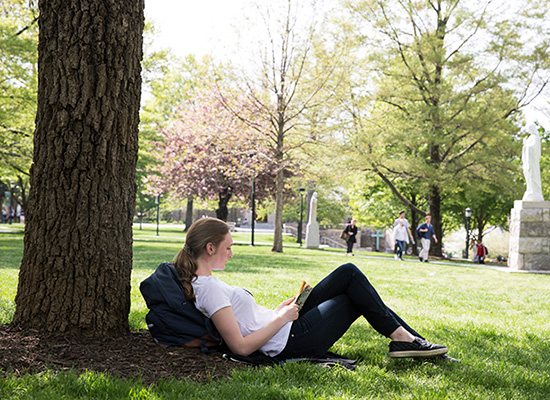Living Landscapes at Loyola Arboretum

Loyola Arboretum is committed to creating spaces for nature to thrive. We use native grasses, shrubs and flowers to create living landscapes that restore soil health, absorb stormwater and provide food and shelter for local and migratory wildlife. Loyola Arboretum’s living landscapes are certified by National Wildlife Federation, Audubon Maryland of Patterson Park and Monarch Watch.
Living landscapes support our Climate Action Plan goal to reimagine the campus landscape to support and enhance native biodiversity, protect local ecosystems and inspire environmental stewardship. Faculty, staff and students from across the university support the research, development and maintenance of these living landscapes. Thank you to our generous volunteers!
Explore the living landscapes at Loyola Arboretum.
Peace Meadow
A cascade of colorful wildflowers frame the Loyola Notre Dame Library and deep rooting perennials attract pollinators and reduce the flow of stormwater into Stony Run Stream. Milkweed and nectar flowers provide critical habitat for migrating Monarch butterflies.
Conservation and Experiential Learning Garden
A winding slope behind Avila Hall features native grasses and wildflowers that provide a thriving home for pollinators, insects, birds and mammals along the forest edge of Stony Run Trail. Tubular flowers like Bee Balm attract hummingbirds and other specialist pollinators.
Fitness & Aquatic Center
Three acres of low-mow conservation landscaping provides enhanced food and cover for birds and insects in this grove of ancient trees. Native plant enhancements installed in Spring 2021.
Ridley Athletic Complex

A buzzing pollinator garden frames the Greyhounds entry sign and welcomes visitors to the Ridley Athletic Complex.
No-Mow Areas

Southwell Hall and Thea Bowman Hall both feature no-mow slopes that provide enhanced food and cover for insects and birds throughout the year.
Campus Partners
- Environmental Studies
- Biology and Natural Sciences
- Loyola Grounds
- Sustainability Committee
- Environmental Action Club
Resources For Your Garden
- Bringing Nature Home: How You Can Sustain Wildlife with Native Plants by Doug Tallamy
- Lawns into Meadows: Growing a Regenerative Landscape by Owen Wormser
- The Living Landscape: Designing for Beauty and Biodiversity in the Home Garden by Rick Darke and Doug Tallamy
- National Wildlife Federation Wildlife Habitat Guide
- Monarch Watch Plant your own Monarch Way Station
- Audubon of Patterson Park Bird Friendly Garden Certification
- National Wildlife Federation Native Plant Finder Tool
